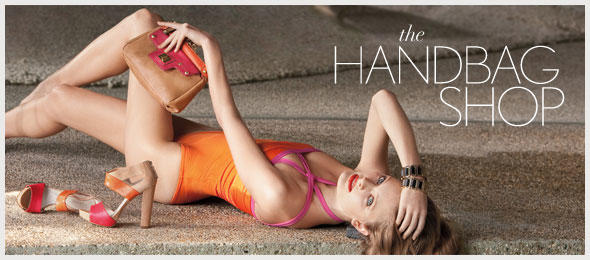Men and women in the society are unequal. There is a belief that it is a man’s world hence women play by men’s rules. One of the areas in which the inequality between men and women stands out is in the area of advertising. Men and women are unequal and the images presented in the adverts depict degrading images about women. All around one is bombarded with images of women depicted as sex objects. There is the general notion that sex sells and hence adverts are full of sex images of women. Jean Kilbourne shows how sex in advertising depicts women as objects. The use of sex in advertising harms women by putting them at the risk of violence and being demeaned.
Producers advertise their products in order to attract potential buyer and increase their sales hence they will tie sex into their adverts as sex sales. The sex appeal in the adverts captures the attention of would be consumers who buy the products and try to emulate the models used in the adverts. Women are used to sell products ranging from cigarettes, perfumes and cars. For example in an advert by Armani Exchange in the Glamour magazine shows a woman on top of a man and their positions shows more of sex than clothes because both participants show more body than clothes as shown in appendix 1.
The woman has a breast showing on her low cut top and the goal is to make her sexually appealing to the men as well as to other women so that they are encouraged to buy the clothes (Armani Exchange 2). In another advert in the same magazine Nine West, another clothing company has an advert about handbags portrayed by a woman dressed in a bikini as seen in appendix 2. She is lying down in a sexually seductive position and one sees more of her body than even the handbag she is advertising (The Handbag Shop 17).
The woman in the handbag advert is facing up so her face is not well seen as opposed to their cleavage and her naked legs as the advertisers focus more on some of her body parts to sell their products. Moreover, a Dolce and Gabbana clothes advert shows a woman lying down in a sexual position and five men looking at her and they seem ready to pounce on her and have sex with her as shown in appendix 3. The image in the ad depicts “…a scene evoking a gang rape and reeking of violence against women” (Stefanson 1).
All the three adverts are harmful to consumers because they objectify women and show them as sex objects for men’s pleasure. The Dolce and Gabbana advert depict violence that men may unleash on a powerless woman as Kilbourne urges in her article. Moreover, such adverts “can increase men’s acceptance of rape myths, interpersonal violence, and gender role stereotyping” (Stankiewicz and Rosselli 587).
Advertisements affect consumers and the society negatively because of the message that they portray that tends to objectify women. The women in the adverts are shown just as sex objects who have nothing more to offer except their sexual appeal. Some of the adverts show men dominating women and the women submit to the men. The message passed to the consumers or the society is that domination or violence against women is all right and the women should take it in silence.
The male consumers of such adverts tend to become violent Kilbourne posits that “Male violence is subtly encouraged by ads that encourage men to be forceful and dominant, and to value sexual intimacy more than emotional intimacy” (272). Men use violence against women because it is shown to be good in the popular culture. In addition, females are made to belief that violence is the normal and the women who go through it are desirable as the adverts show.
Hence, the women who consume adverts laced with violence undertones see violence against them as the norm. The society in general is brainwashed to believe that violence against women is okay and thus little is done to protect women from violence and those who become victims are blamed or seen to be responsible for the provoking the men to violence. In addition, some of the adverts teach young people to become violent from a young age such as the advert for Bitch skateboard in which a cartoon depicting a young boy points a gun at the head of a young girl. The message of the ad misleads young boys “Many boys grow up feeling that they are
Unmanly if they are not always ‘ready for action’, capable of and interested in sex with any women who is available” (Kilbourne, 285).
Women who see the adverts imbibed with sex try to live up to the models they see in the commercials. They internalize the images they see on the commercials and strive to achieve those standards because they view themselves through the eyes of other people. Such women will try all sorts of procedures to help them alter their bodies so that they can conform to the societal expectations of beauty in the society.
The beauty in the society is defined in terms of sex appeal as shown in many adverts and hence the women develop and uphold unhealthy beliefs about beauty. The women in such case develop a bad behavior of self-objectification as are more likely to endorse the sexual stereotypes presented in the advertisements. Furthermore, the adverts make women develop negative body images because they are not as thin or with flawless skins as models on commercials.
Tiggemann and McGill say ”when women compare themselves to an image presented in the media, this almost invariably represents an upward social comparison by which they find themselves lacking, thus leading to a negative mood” (26). The women hence hate certain parts of their bodies, which they consider ugly or imperfect yet they can never achieve the kind of bodies that the models show in the ads.
The message sent out to girls and women can cause them to have health problems especially when they begin to diet or take diet pills in order to lose weight. Some will even develop bulimia and become anorexic. The unhealthy eating habits can lead to other diseases and even the death. Some girls and women will take up smoking of cigarettes to lose weight and may end up suffering from cancer at the end. Sadly, the ideal of a perfect body as seen on adverts “is accepted and internalized by many women” (Tiggemann and McGill 24).
Finally, sex in advertising does more harm than good to the consumers and the society. The consumers of sex adverts try to emulate what they see and become disappointed when they fail to achieve the body and the happiness that the models in the ads show. The society is made to develop certain standards of beauty and the women have to conform to or they are considered mediocre.
Men treat women in their lives as sex objects because the adverts they see in the media depict them as such hence they treat them as objects that lack any other value expect provision of sex. Such men are likely to unleash violence on the women because they objectify them that make it easy for them to treat them as lesser human beings. The objectification in the adverts causes many problems in the society as people are influenced by the adverts to behave in a certain way and they may not even realize that the ads have any power over them. The sex imbibed adverts will continue to influence consumers negatively and action must be taken to discourage producers from placing such adverts that demean women.
Appendix 1

Appendix 2

Appendix 3

Works Cited
“Armani Exchange”. Glamour Magazine. March. 2010: 2. Print.
Kilbourne, Jean. Two ways a woman can get hurt. Can’t buy my love: how advertising changes the way we think and feel. New York: Simon & Schuster, 2000.
Stankiewicz, Julie, and Francine Rosselli. “Women as Sex Objects and Victims in Print Advertisements.” Sex Roles, 58.7-8 (2008): 579-589. Academic Search Complete.EBSCO. Web.
Stefanson, Sarah. Dolce $ Gabbana court controversy with ad campaigns. 2010. Web.
“The handbag shop”. Glamour Magazine. 2010: 17. Print.
Tiggemann, Marika, and Belinda Mcgill. “The role of social comparison in the effect of magazine advertisements on women’s mood and body dissatisfaction.” Journal of Social & Clinical Psychology 23.1 (2004): 23-44. Academic Search Complete. EBSCO. Web.